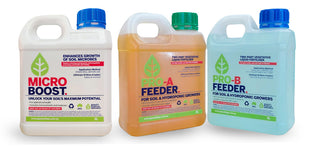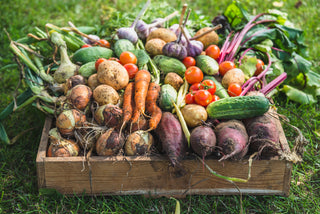Important Notice
These seeds are Open-Pollinated (OP), meaning they are produced through natural pollination processes. For optimal results and safety:
- Do not consume the seeds or give them to animals.
- Keep the seeds away from children and pets.
- Always wear gloves when handling the seeds, and wash your hands thoroughly with soap and water afterward.
Note: Open-Pollinated seeds are not genetically modified (GMO). They are developed through traditional breeding techniques that allow them to naturally reproduce the same traits from one generation to the next.
Open-Pollinated seeds are ideal for planting and propagation in your garden, offering a sustainable option for seed saving. The crops produced from these seeds are safe to eat and maintain the original characteristics of the parent plants, allowing for consistent results year after year.
In Australia, the use of Open-Pollinated seeds may be subject to AQIS (Australian Quarantine and Inspection Service) regulations under the Department of Agriculture, Water and the Environment. Be sure to follow any specific guidelines related to seed treatment or handling. Always read and adhere to the instructions on the seed packet for best results.
Why Open-Pollinated Seeds?
Open-Pollinated seeds are a reliable choice for gardeners who wish to maintain the genetic diversity and integrity of their plants. Here’s a summary of their advantages and considerations:
| Advantages | Disadvantages |
|---|---|
| Seed Saving: OP seeds can be saved and replanted season after season, producing crops with the same characteristics as the parent plants. | Variability: Due to natural pollination, there can be some variation in the plants, which may be less desirable for growers seeking uniform crops. |
| Genetic Diversity: Open-pollinated plants contribute to the preservation of plant genetic diversity, which is essential for long-term agricultural sustainability. | Disease Susceptibility: OP seeds may not have the same level of resistance to diseases and pests as hybrid seeds, potentially requiring more vigilant care. |
| Cost-Effective: Since OP seeds can be saved and reused, they are often more cost-effective in the long term, especially for home gardeners and small-scale farmers. | Lower Yields: OP seeds may produce lower yields compared to hybrid seeds, which are often bred for enhanced performance under specific conditions. |
| True-to-Type: When properly isolated, OP seeds produce true-to-type plants, preserving the distinct characteristics of the variety. | Cross-Pollination Risk: OP plants may cross-pollinate with other varieties, leading to unintended hybrids if not carefully managed. |
History of Open-Pollinated Seeds
Open-Pollinated seeds have a long history, dating back thousands of years to the earliest agricultural practices:
- Ancient Agriculture: Open-pollinated seeds have been used by farmers and gardeners since the dawn of agriculture, allowing them to save and replant seeds from their best-performing crops.
- 18th-19th Century: The formal study of plant genetics began, and gardeners started to understand the importance of maintaining genetic diversity in open-pollinated crops.
- 20th Century: As hybrid seeds became more popular, open-pollinated varieties continued to be maintained by traditional farmers and seed savers, preserving heirloom varieties and genetic diversity.
- 21st Century: Open-pollinated seeds have seen a resurgence in popularity due to the growing interest in sustainable agriculture, heirloom gardening, and food security. Many gardeners and farmers now choose OP seeds for their ability to be saved and passed down through generations.
Open-Pollinated seeds play a crucial role in preserving agricultural heritage and ensuring the sustainability of food systems. By choosing OP seeds, gardeners contribute to the ongoing preservation of plant diversity and the resilience of our food supply.





